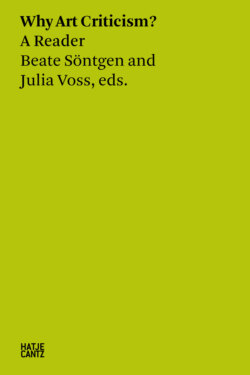Читать книгу Why Art Criticism? A Reader - Группа авторов - Страница 28
ОглавлениеAnanda K. Coomaraswamy
What is the urgency today of revisiting art criticism by Ananda K. Coomaraswamy (1877–1947), one of the great art historians of the twentieth century, when the world seems to be hurtling toward an uncertain future? Coomaraswamy has had an enduring presence across time. In him, we see not only a strident critic of cultural imperialism but even a proto-globalist for whom terms currently in use, Global North and Global South, were prescient. With his proficiency in Greek, Latin, Sanskrit, Pali, Persian, and Chinese, he had access to different knowledge systems in the world. His art criticism may be situated in the first half of the twentieth century when art, art history, and metaphysics became a means for asserting the intellectual autonomy of the Global South.
Born of a Ceylonese-Tamil father and English mother, he was educated in England. Early in his life, he abandoned a career in geology to devote full attention to the study of “Eastern” culture. During his field trips to Sri Lanka to study its rocks and minerals, his attention shifted to its people and culture. This turn from physical sciences to culture brought his biracial identity to the fore and made him acutely aware of cultural differences. His first book Mediaeval Sinhalese Art (1908) became a plank from which to delve deeper into aesthetics, literature, mythology, folklore, religion, and metaphysics of South and Southeast Asia and also develop an abiding investment in comparativist projects. His acute awareness of the pitfalls of modernization—premised on rapacious capitalism and its attendant inequalities—made him extremely critical of modernity and respectful of tradition. Given that he addressed audiences from both the East and the West (to use his favored binary), modernity and traditionalism were like two hats that he seemed to be forever alternating. When in Sri Lanka and India, he would write as a cultural nationalist and be lauded as a defender of Asian art against colonial misrepresentation; while in the West, he spoke eloquently of avant-garde modernism, especially photography, which he considered as the most authentic genre, least burdened by egoistic individuality.
Given his eclectic cosmopolitanism, his art criticism addressed both specialist and general audiences. Despite being a vociferous critic of modernity, his writing ironically embraced judicious art criticism. He developed an unambiguous yardstick for judging art calibrated around the quotient of spiritualism. Despite his anti-modernism, there is something uncannily contemporary about both his vision of the public role of art and museums and his critique of the art market. The other takeaway from Coomaraswamy is his persistent doubt of whether modernism was purely European, a claim that his comparativism served to resist. Modernism never emerged in splendid isolation from the East, but in a dialogue with it, most visible in the repressed site of the sacred.
Today, Coomaraswamy’s relevance to our globalized world lies in the salience that he attached to what I call discursive equality between the East and the West: the need to enter into the difficult terrain of intellectual discourse of each other’s philosophy, language, and aesthetics so that conceptual frameworks travel from one cultural context into another without epistemic violence. That his writings resonate with us now is partly because of his perspicacity, and partly because the power relations across the so-called periphery and the margins have not fundamentally altered. It is little wonder that even today, after decades of political sovereignty of the formerly colonized countries, decolonizing art history has resurfaced as a hot topic in contemporary art discourse—an area that compels us to revisit Coomaraswamy in our increasingly complex and fraught world.
